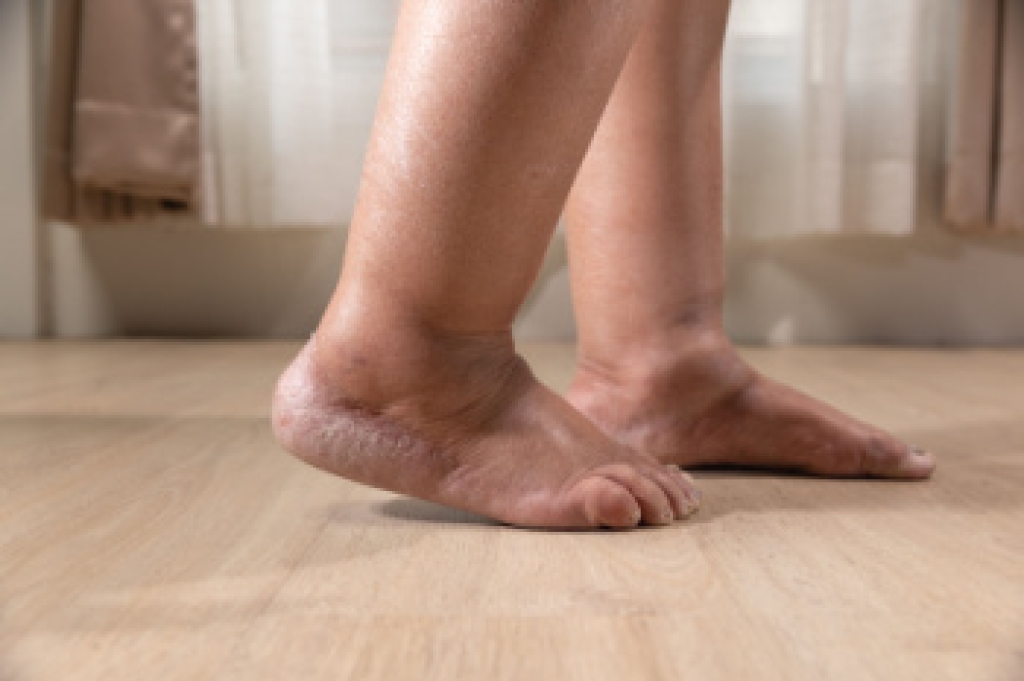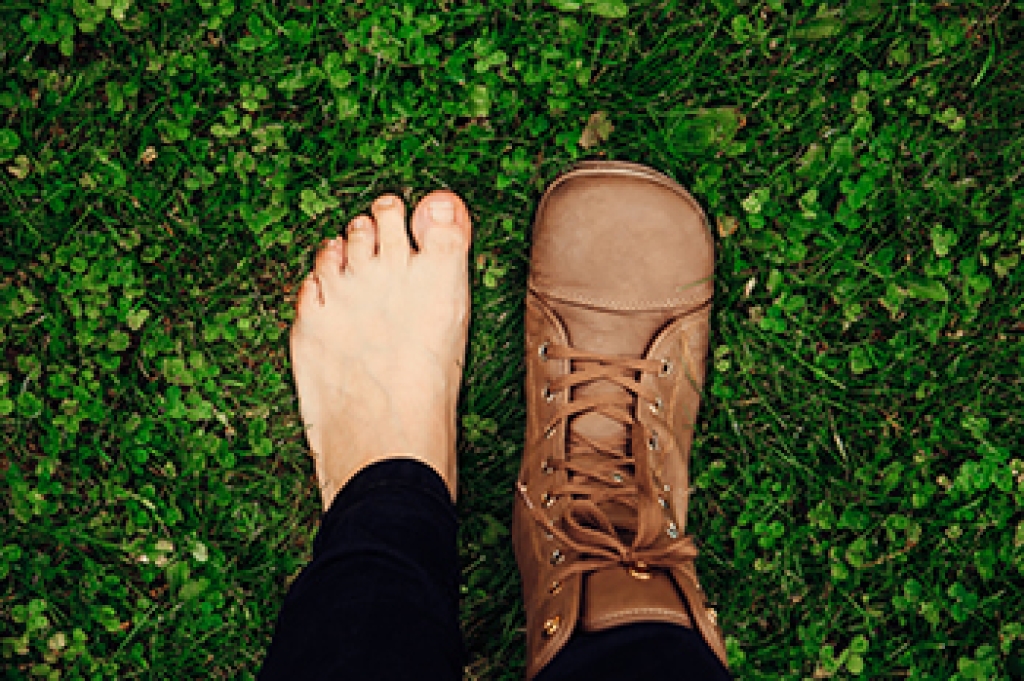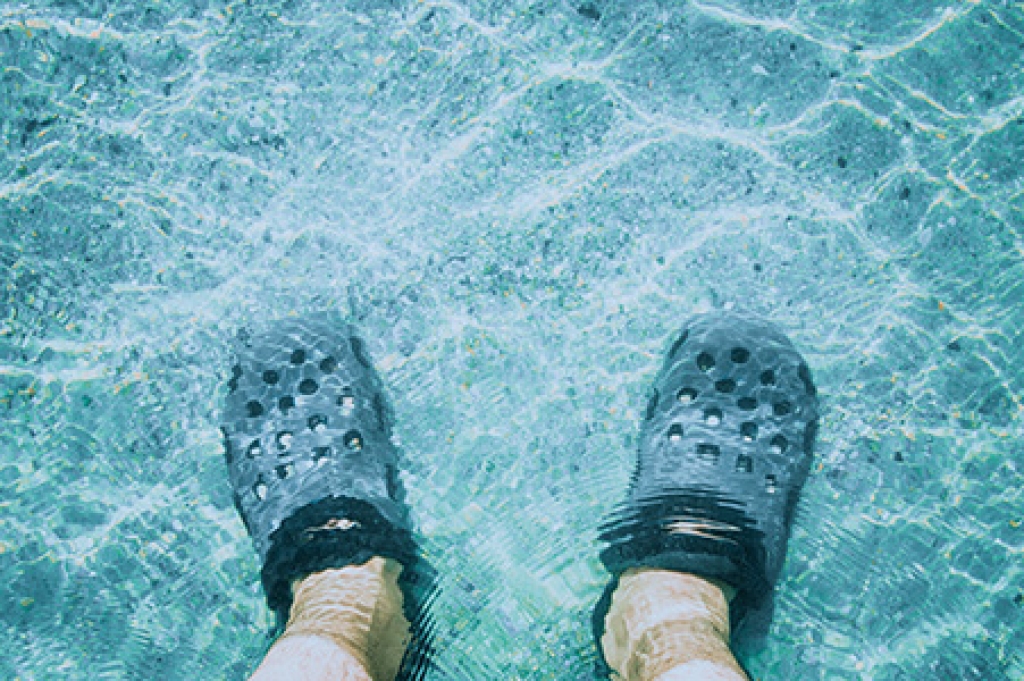Connect With Us
Blog
Blog
Understanding the Causes and Symptoms of Swollen Feet

Swollen feet can develop for many reasons and often signal an underlying issue that needs attention. Common causes include prolonged standing, injuries that lead to inflammation, and venous insufficiency where blood struggles to return to the heart. More serious health concerns such as heart or kidney disease can also contribute to fluid buildup in the feet and ankles. Symptoms may include puffiness, tight skin, discomfort, or reduced mobility. A podiatrist can evaluate the cause, provide targeted treatment, and recommend strategies to reduce swelling and improve circulation. If you notice frequent or persistent swelling in your feet, it is suggested that you schedule a visit with a podiatrist for expert care and appropriate relief options.
Swollen feet can be a sign of an underlying condition. If you have any concerns, contact one of our podiatrists of Brondon Foot and Ankle. Our doctors can provide the care you need to keep you pain-free and on your feet.
Swollen feet are a common ailment among pregnant women and people who stand or sit for extended periods. Aging may increase the possibility of swollen feet and patients who are obese often notice when their feet are swelling too. There may be medical reasons why swollen feet occur:
- Phlebitis - A condition that causes the veins to become inflamed and can also cause leg pain.
- Liver disease - This may lead to low blood levels of albumin which is a protein. This can cause fluid in the blood to pass into the tissues and several areas of the body can become swollen.
- Heart failure - When the heart doesn’t pump properly the blood that is normally pumped back to the heart can pool in the veins of the legs causing swollen feet.
- Kidney disease - One of the main functions of the kidneys is releasing excess fluid in the body. This type of condition can make it difficult for the kidneys to function properly, and as a result the feet may become swollen.
- Deep-vein thrombosis (DVT)- This is a serious condition where blood clots form in the veins of the legs. They can block the return of blood from the legs to the heart which may cause the feet to swell. It is important to be treated by a podiatrist if this condition is present.
Swollen feet can also be caused by bone and tendon conditions, including fractures, arthritis, and tendinitis. Additionally, there may be skin and toenail conditions and an infection may cause the feet to swell. Patients who take medicine to treat high blood pressure may be prone to getting swollen feet.
Many patients elevate their feet to help relieve the swelling and this is generally a temporary remedy. When a podiatrist is consulted the reason behind the swelling can be uncovered and subsequently treated.
If you have any questions please contact our office located in Centerville, OH . We offer the newest diagnostic and treatment technologies for all your foot and ankle needs.
Foot Stress Fractures Can Be Common Among Runners

Stress fractures are tiny cracks in bones that develop from repetitive force or overuse, making them a common issue among runners and athletes. They often occur in the weight-bearing bones of the foot where repeated impact can exceed the bone’s ability to repair itself. Symptoms include localized pain that worsens with activity, swelling, tenderness, and difficulty walking. Risk factors include sudden increases in training intensity, wearing improper footwear, poor running mechanics, or low bone density. A podiatrist can evaluate the injury through a physical examination and imaging tests, suggest supportive footwear or custom orthotics, and recommend activity modifications. If you enjoy running and have developed consistent foot pain, it is suggested that you promptly consult a podiatrist who can offer relief, treatment, and prevention tips for foot and ankle injuries.
Activities where too much pressure is put on the feet can cause stress fractures. To learn more, contact one of our podiatrists from Brondon Foot and Ankle. Our doctors can provide the care you need to keep your pain free and on your feet.
Dealing with Stress Fractures of the Foot and Ankle
Stress fractures occur in the foot and ankle when muscles in these areas weaken from too much or too little use. The feet and ankles then lose support when walking or running from the impact of the ground. Since there is no protection, the bones receive the full impact of each step. Stress on the feet can cause cracks to form in the bones, thus creating stress fractures.
What Are Stress Fractures?
Stress fractures occur frequently in individuals whose daily activities cause great impact on the feet and ankles. Stress factors are most common among:
- Runners
- People affected with Osteoporosis
- Tennis or basketball players
- Gymnasts
- High impact workouts
Symptoms
Pain from the fractures occur in the area of the fractures and can be constant or intermittent. It will often cause sharp or dull pain with swelling and tenderness. Engaging in any kind of activity which involves high impact will aggravate pain.
If you have any questions please contact our office located in Centerville, OH . We offer the newest diagnostic and treatment technologies for all your foot and ankle needs.
Finding Shoes to Fit Wide Feet

Finding shoes for wide feet starts with understanding what makes the foot feel cramped inside a narrow design. Some people are born with a wider forefoot, while others notice widening over time as ligaments loosen. Sometimes deformities like bunions or hammertoes change the shape of the toes. Wearing shoes that lack adequate support or have a tight, shallow toe box can lead to rubbing, pressure, and changes in toe position. A podiatrist can evaluate the width of the foot, the height of the arch, and any areas that require extra space to prevent irritation. Shoes offered in wide sizes, with softer materials and a deep, rounded toe box, often reduce pressure on the toes and the outer edges of the foot. Flip-flops rarely provide the structure needed for wide feet and can worsen discomfort. If you have foot or shoe problems related to wide feet, it is suggested that you make an appointment with a podiatrist for a diagnosis and treatment options.
Finding a properly-fitting shoe is important in reducing injuries and preventing foot problems. For more information about treatment, contact one of our podiatrists from Brondon Foot and Ankle. Our doctors will treat your foot and ankle needs.
Proper Shoe Fitting
A common concern when it comes to foot health, having properly fitted shoes can help prevent injuries to the foot. Out feet affect our posture and gait, which in turn affects the biomechanics and overall bodily structure. With 33 joints, 26 bones, and over 100 ligaments, the potential for serious injury is much greater than one realizes. Although the feet cease growth in adulthood, they still change shape as they mature. Here are some factors to consider when it comes to investing in proper fitting shoes:
- Be sure the shoes fit correctly right away
- Ensure the ball of your foot fits comfortably in the widest portion of the shoes
- Even though they may look fashionable, improper fitting shoes can either create adverse conditions or exacerbate existing ones you may already have
- Walk along a carpeted surface to ensure the shoes comfortably fit during normal activity
Keeping in mind how shoes fit the biomechanics of your body, properly-fitting shoes are vitally important. Fortunately, it is not difficult to acquire footwear that fits correctly. Be sure to wear shoes that support the overall structure of your body. Do your feet a favor and invest in several pairs of well-fitted shoes today.
If you have any questions, please feel free to contact our office located in Centerville, OH . We offer the newest diagnostic and treatment technologies for all your foot care needs.
Why Aqua Shoes Are Worth Wearing

Aqua shoes are designed to keep your feet safe and comfortable in wet or slippery environments. Their flexible soles grip uneven surfaces, reducing the chance of slipping on rocks, pool decks, or boat ramps. The lightweight, quick-drying materials help prevent blisters and skin irritation while allowing your feet to breathe. Unlike walking barefoot, aqua shoes form a protective barrier against sharp objects, rough sand, or hidden debris beneath the water’s surface. They also limit exposure to bacteria and fungi often found in warm, damp areas like public showers or lakeshores. Because they fit securely without feeling heavy, they make moving through water or transitioning to dry land easier and more comfortable. If you develop foot irritation, cuts, or infections after spending time in or near water, it is suggested that you see a podiatrist for evaluation and appropriate care.
Ankle and foot injuries are common among athletes and in many sports. They can be caused by several problems and may be potentially serious. If you are feeling pain or think you were injured in a sporting event or when exercising, consult with one of our podiatrists from Brondon Foot and Ankle. Our doctors will assess your condition and provide you with quality foot and ankle treatment.
Common Injuries
The most common injuries that occur in sporting activities include:
- Achilles Tendonitis
- Achilles Tendon Rupture
- Ankle Sprains
- Broken Foot
- Plantar Fasciitis
- Stress Fractures
- Turf Toe
Symptoms
Symptoms vary depending upon the injury and in some cases, there may be no symptoms at all. However, in most cases, some form of symptom is experienced. Pain, aching, burning, bruising, tenderness, tightness or stiffness, sensation loss, difficulty moving, and swelling are the most common symptoms.
Treatment
Just as symptoms vary depending upon the injury, so do treatment options. A common treatment method is known as the RICE method. This method involves rest, applying ice, compression and elevating the afflicted foot or ankle. If the injury appears to be more serious, surgery might be required, such as arthroscopic or reconstructive surgery. Lastly, rehabilitation or therapy might be needed to gain full functionality in the afflicted area. Any discomfort experienced by an athlete must be evaluated by a licensed, reputable medical professional.
If you have any questions please contact our office located in Centerville, OH . We offer the newest diagnostic and treatment technologies for all your foot and ankle needs.
Blog Archives
- 2025
- 2024
- 2023
- 2022

